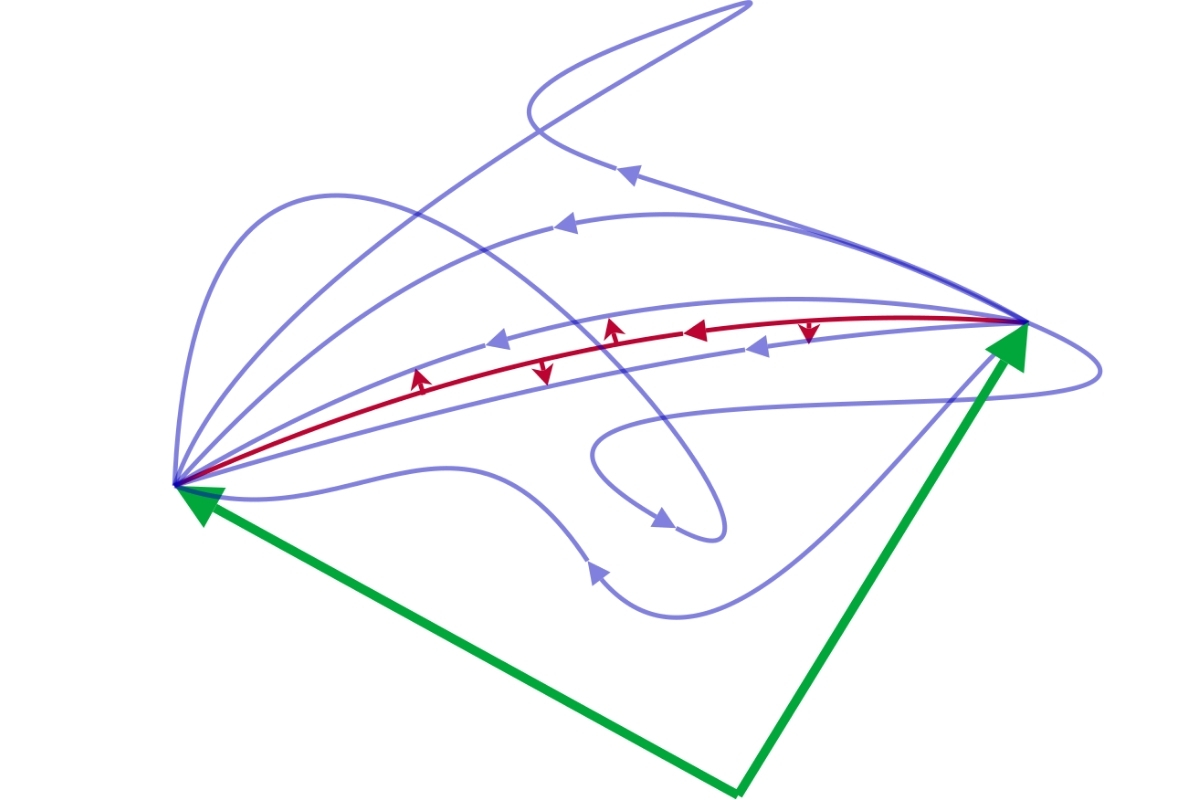
Hamilton's equations are a cornerstone in physics, especially in classical mechanics. Ever wondered how these equations shape our understanding of motion and energy? Hamilton's equations offer a powerful way to describe the evolution of a physical system over time. They transform complex problems into more manageable forms, making them essential for physicists and engineers alike. These equations use coordinates and momenta to provide a comprehensive picture of a system's dynamics. From planetary orbits to quantum mechanics, Hamilton's equations have far-reaching applications. Ready to dive into some intriguing facts about these equations? Let's explore how they continue to influence modern science and technology.
What Are Hamilton's Equations?
Hamilton's equations are a set of differential equations that describe the evolution over time of a physical system. They are fundamental in classical mechanics and provide a powerful framework for understanding the dynamics of systems.
-
Developed by Sir William Rowan Hamilton: Hamilton's equations were formulated by the Irish mathematician and physicist Sir William Rowan Hamilton in the 19th century.
-
Based on Hamiltonian Mechanics: These equations are a cornerstone of Hamiltonian mechanics, an alternative formulation to Newtonian mechanics.
-
Two Main Equations: Hamilton's equations consist of two first-order differential equations that describe the time evolution of a system's coordinates and momenta.
-
Canonical Coordinates: The equations use canonical coordinates, which include generalized positions and momenta, to describe the state of a system.
-
Symplectic Geometry: Hamilton's equations are deeply connected to symplectic geometry, a branch of mathematics that studies spaces with a symplectic structure.
Importance in Physics
Hamilton's equations have profound implications in various fields of physics, from classical mechanics to quantum mechanics.
-
Conservation Laws: These equations naturally incorporate conservation laws, such as the conservation of energy and momentum.
-
Predictive Power: They allow for precise predictions of a system's future behavior based on its current state.
-
Phase Space: Hamilton's equations describe the evolution of a system in phase space, a multidimensional space where each point represents a possible state of the system.
-
Action-Angle Variables: In certain cases, Hamilton's equations can be simplified using action-angle variables, making it easier to solve complex problems.
-
Quantum Mechanics: The principles underlying Hamilton's equations are foundational to the development of quantum mechanics, particularly in the formulation of the Schrödinger equation.
Applications in Modern Science
Hamilton's equations are not just theoretical constructs; they have practical applications in various scientific disciplines.
-
Astrophysics: They are used to model the motion of celestial bodies, such as planets and stars, in astrophysics.
-
Engineering: Engineers use Hamilton's equations to design and analyze mechanical systems, from simple pendulums to complex machinery.
-
Control Theory: In control theory, these equations help in the design of systems that can maintain desired states or follow specific trajectories.
-
Economics: Surprisingly, Hamilton's equations find applications in economics, particularly in the modeling of dynamic systems and optimization problems.
-
Biological Systems: They are also used to model biological systems, such as the dynamics of populations and the spread of diseases.
Mathematical Beauty
The mathematical elegance of Hamilton's equations is one of the reasons they are so widely studied and appreciated.
-
Hamiltonian Function: The Hamiltonian function, often representing the total energy of the system, plays a central role in these equations.
-
Poisson Brackets: The equations can be expressed using Poisson brackets, a mathematical structure that encodes the relationships between different physical quantities.
-
Canonical Transformations: Hamilton's equations are invariant under canonical transformations, which preserve the form of the equations while changing the coordinates.
-
Liouville's Theorem: This theorem, which states that the phase space volume is conserved under Hamiltonian flow, is a direct consequence of Hamilton's equations.
-
Integrability: In some cases, Hamilton's equations can be exactly solved, leading to integrable systems with predictable behavior.
Historical Context
Understanding the historical context of Hamilton's equations provides insight into their development and significance.
-
19th Century Breakthrough: Hamilton's work in the 1830s marked a significant breakthrough in the mathematical formulation of mechanics.
-
Influence of Lagrange: Hamilton built upon the work of Joseph-Louis Lagrange, who developed the Lagrangian formulation of mechanics.
-
Impact on Mathematics: Hamilton's equations influenced the development of various mathematical fields, including differential geometry and dynamical systems.
-
Legacy: The legacy of Hamilton's equations extends beyond physics and mathematics, influencing other scientific disciplines and even philosophy.
-
Educational Importance: They are a fundamental part of the curriculum in physics and engineering programs worldwide.
-
Continued Research: Research on Hamilton's equations continues to this day, with scientists exploring new applications and extensions of this powerful framework.
The Final Word on Hamilton's Equations
Hamilton's equations are a cornerstone in physics and mathematics. They offer a powerful way to describe the motion of systems, from simple pendulums to complex planetary orbits. These equations have applications in various fields, including quantum mechanics, statistical mechanics, and even economics. Understanding them can provide deeper insights into the natural world and the laws governing it.
Their elegance lies in their ability to simplify complex problems into manageable equations. By focusing on energy rather than force, Hamilton's equations offer a different perspective that can be more intuitive for solving certain types of problems. Whether you're a student, a researcher, or just a curious mind, grasping these equations can open up new avenues of understanding.
So, next time you encounter a challenging problem, remember Hamilton's equations. They might just be the key to unlocking a solution.
Was this page helpful?
Our commitment to delivering trustworthy and engaging content is at the heart of what we do. Each fact on our site is contributed by real users like you, bringing a wealth of diverse insights and information. To ensure the highest standards of accuracy and reliability, our dedicated editors meticulously review each submission. This process guarantees that the facts we share are not only fascinating but also credible. Trust in our commitment to quality and authenticity as you explore and learn with us.
